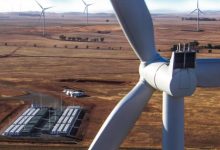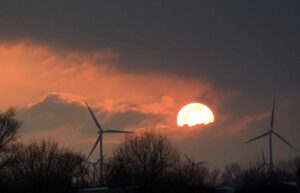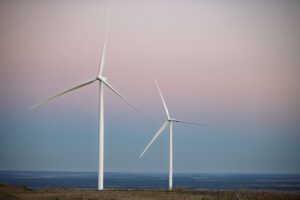The share of renewables in South Australia reached an “extraordinary” peak of 91.5 per cent last November, when the grid was isolated by broken transmission lines, in what the Australian Energy Market Operator describes as a glimpse into Australia’s energy future.
South Australia is already seen as a test case for the global switch to renewables, because it has a higher percentage of variable wind and solar in its electricity market than any other gigawatt-scale grid in the world – 68.4 per cent over the last 12 months – and with only one “synchronous” link to another state.
The share of renewables has actually peaked at around 140 per cent, but that is because South Australia is usually able to export excess power to Victoria through transmission lines, or store some of it in one or more of its three big batteries.
Supporting high levels of renewables in an isolated grid is more challenging, because of the need to provide essential grid services, although Western Australia recently reached a peak of 84.3 per cent on December 12 last year.
In November last year, South Australia did even better. Its synchronous link to Victoria was cut for more than a week after severe storms brought down one of the main transmission towers, removing its ability to export excess large amounts of wind and solar, or even import when needed.
The latest Quarterly Energy Dynamics report from AEMO reveals that South Australia, even in its “islanded” state, peaked at an “extraordinary” high level of 91.5 per cent. (It should be noted that the lower capacity Murray Link was still operating, but does not provide a “synchronous” connection).
“While SA lost interconnection, instantaneous renewable penetration in SA peaked at an extraordinary 91.5% on 19 November,” AEMO’s Violetter Mouchaileh, the head of reform delivery, says in the latest Quarterly Energy Dynamics report.
“This was possible with the support of four new synchronous condensers that are strategically placed within the SA network, providing system strength services that are traditionally offered by coal, gas, and hydro.
“The ability to manage frequency using the Hornsdale big battery and gas generation was critical to maintain system reliability with high renewable penetration.
“This event was a glimpse of the future, when both batteries and gas generation will be key to Australia realising its renewable potential.”
It should be noted that South Australia has nearly 3GW of gas generation capacity in its grid, a legacy of its support role to the coal fired power stations that are now closed, and only three operating big batteries.
That equation will change rapidly as more gas generators are shut down, more big batteries are built (another three are already under construction, including at Torrens Island where a new battery will replace an ageing gas plant) and when the new transmission link to NSW allows bulk renewables to reach “net 100 per cent:”
The combination of bulk renewables and new grid forming inverters, and the state’s four synchronous condensers (spinning machines that do not burn fuel), means that gas will be relegated to a more discrete role in fast start dispatchable capacity, and as generators of last resort – at least until there are enough bulk renewables, battery storage and green hydrogen generators that can replace them.
When South Australia reached at 91.5 per cent renewables peak – at 9.30am – most of it was coming from rooftop solar PV (55 per cent), with wind providing 33 per cent and grid scale solar 4 per cent.
However, AEMO was forced to intervene heavily in the market to reduce the amount of rooftop solar. Left to its own devices, rooftop PV was capable to meeting all or nearly all local demand, leaving AEMO with little control over the running of the grid.,
In order to manage the power system, AEMO directed some synchronous generators online for FCAS provision, and instructed the local network provide to curtail distributed PV for four to 10 hours each day from November 13 to 17, and on November 19. RenewEconomy understands this affected up to 400MW of capacity.
The FCAS market surged to the market cap, forcing AEMO to impose administered pricing. Battery storage was the biggest beneficiary, with Hornsdale pocketing $10.6 million despite reduced FCAS capacity, and the smaller Dalrymple North battery collecting $4 million.
Gas generators were happy to remain on line as the prices were high, but then they fell AEMO had to intervene to force them to stay on line. Overall, however, the number and cost of “directions” fell significantly thanks to the new syncons in the local grid.
All this is delivering benefits to South Australia. It had the lowest average wholesale electricity prices in the December quarter ($63/MWh), which is around half of the price paid in the coal-dependent states of Queensland and NSW. That will help shield customers from some of the price rises facing other states.







